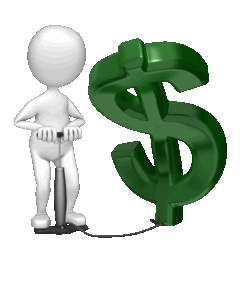
Mr. Dostert's Domain


Trade & Commerce

Why do nations trade?
It seems like it would be beneficial for societies to be self-sufficient, that is produce all the goods and services they need themselves. However, in reality trade benefits society by allowing it to increase its output through cooperation in the form of trade. Nations therefore specialize in certain industries or economic activities that they are able to produce more efficiently and thereby contribute greatest to the world economy. There are several factors that determine which industries or economic activity they choose to devote their resources to.

Resources
As you know, the world has a variety of climates and the resources of countries are just as varried as the cultures which inhabit them. Among the natural resources which may enable or prohibit production are the quality of soil, availability of minerals, presence of oil or natural gas, plentiful rivers, abundant rainfall, etc. These factors all contribute to the goods and services a nation will produce.

Culture
Cultural values also play an important role in the goods a nation will decide to produce. Although a culture may have the resources to produce a certain good, if that good is not something that is valued by the people of the region it will often not be produced despite the economic advantages of producing the good. Furthermore, different cultures have different levels of education and intellectual capital that can be used in the production of different types of goods that may take a higher level of technological know-how that other nations might not possess.

Traditions
Along with culture, traditions also play a huge roll in the production of goods and services. Regions that traditionally produce a good persist in its production and will use traditional methods despite economic incentives to produce other goods. However, these traditions often produce trade secrets as methods of production are passed on generation to generation allowing them to produce the good at a higher quality or more efficiently than regions trying to produce a good without traditional knowledge.

The Benefits of Trade
We saw in the last unit that when a individuals specialize in the production process we see increased marginal gains. This also applies when nations trade and specialize in the production of a few goods and services and then use their excess production to trade for the other goods their society needs.
When a country produces independently it is constrained by its Production Possibilities Frontier. Due to scarcity every level of production comes at the expense of another good that must be sacrificed in order to produce the good or goods that are desired.

When two countries specialize in their production and trade their excess goods they are able to consume goods beyond their production possibilities curve benefiting both nations as seen below. This chart demonstrates the advantage of international trade and explains why trade has rapidly expanded over the last century as nations increasingly choose to specialize in the production of certain goods and trade for others.

Globalization
Over the past century the rapid expansion of trade has led to the globalization of markets as the mass movement of goods across international boarders has led to networks of interdependence in which nations around the world depend upon each other to produce the goods and services they need. This has enabled goods from all over the world to be available at every market at low costs to consumers, resulting in the creation of one global market. To many this is a positive, however many are beginning to question the globalization as local economic activities are displaced in the new global market for more lucrative alternatives.

The Positives of Globalization
Globalization has led to many positives for the world as a whole; it has created more efficient markets, increased competition, stabalized security, and more wealth equality throughout the world. This means that the standard of living has increased dramatically throughout the world as increased production has created cheaper goods which benefit people throughout the world at different levels. We may find it hard to believe when we see pictures of places in India or Africa where the standard of living is far below our own, however although their standard of living remains far below that of our own society, globalization has dramatically increased their wealth as jobs become more plentiful and far fewer face starvation. Rich countries also benefit greatly as globalization has opened new markets to their goods allowing them to attain greater profits which further drives their economies forward.

The Negatives of Globalization

Globalization has also had negative consequences on the world as economies become more and more intertwined. The first and most commonly sited complaint is found in outsourcing of jobs. Manufacturing jobs that were once done in more developed countries such as the United States are now often moved to places where workers are paid less such as Mexico, Vietnam, or Bangladesh. This allows companies to increase their profits, however it causes many workers in developed countries to go jobless. Furthermore, because these places often have few workers' protections these factories become sweat shops with horrible working conditions and extremely low pay.
Another problem that has resulted from globalization is that as economies beome more dependent on each other, if one market fails there is danger of a global economic catastrophe. Globalization shows no sign of slowing down in the coming years so the real question that has yet to be answered is if this will ultimately be a benefit or detriment for mankind.

Absolute & Comparative Advantage
Because countries have different resources, customs, and traditions they all are able to produce different goods at different efficiencies. Some countries therefore have advantages over others when producing certain goods.

Absolute Advantage
When a nation is able to produce goods at a higher rate than another nation it is said to have the absolute advantage. There can be many causes for this advantage ranging from a higher educated populace to more advanced technology. A country with absolute advantage can therefore produce more of a good more quickly.
Comparative Advantage

When a nation is able to produce goods with a lower opportunity cost it is said to have the comparative advantage. Comparative advantage shows which country is best served by producing a good because it shows economists who is giving up less to produce a good. When trading, a country with a comparative advantage should produce that good in which it has the comparative advantage and trade for the good in which they do not.

Calculating Advantage
When determining absolute and comparative advantage we must always remember that these are relative concepts- they exist only as comparisons to the subjects being compared.
Absolute Advantage


Absolute advantage is a rather simple concept to calculate. In the example to the right Country A can produce more apples and bananas than Country B can, therefore they have the absolute advantage in both producing apples and bananas.
Comparative Advantage

Comparative advantage measures which country has the lower opportunity cost and therefore requires us to calculate the opportunity cost for each.
In the example above Country A can produce 10 apples or 25 bananas this means the relationship for apples to bananas for Country A is 10 to 25 or when simplified 1 apple for every 2.5 bananas. Country B has a relationship of 8 apples to every 16 bananas which can be simplified to 1 apple for every 2 bananas. The simplified relationship is the opportunity cost. Now when we compare Country A to Country B we can see that Country B has a lower opportunity cost in the production of apples, therefore Country B has the Comparative Advantage in the production of apples.
If we wanted to calculate the comparative advanatage for bananas in the example from above we would go about it using the same method, for Country A the relationship is 25 bananas for every 10 apples or 1 banana for every .4 apples. For Country B the relationship is 16 bananas for every 8 apples or 1 banana for every . 5 apples. When we compare Country A to Country B we can see that Country A has the lower opportunity cost for producing bananas, therefore Country A has the Comparative Advantage in the production of bananas.
One important note that we should make is that unlike absolute advantage where one country can have absolute advantage in the production of both goods, if one country has the comparative advantage in the production of one good then it will not have the comparative advantage in the production of the other. This is why trade always benefits both nations, because each nation will have a comparative advantage in the production of one good.
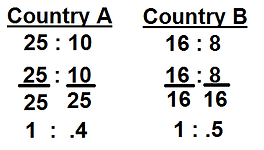
Calculating Advantage Using Time Data


In certain circumstances you will be required to calculate absolute and comparative advantage using how long it takes to produce the goods which are being compared, this adds an extra step to the calculation process. Lets look at the example below.


To answer this problem we must transform the hours into actual levels of production so that we can calculate the actual opportunity cost for the production of each unit.
When we look at Country C we see that one unit of Salmon takes 3 hours to produce whereas Coconut Creme Pies require 5 hours to produce one unit. In order to compare these goods we need a common unit of time that both 3 and 5 are divisible by; we will use the number 15. In 15 hours Country C can produce 5 units of Salmon or 3 units of Coconut Creme Pies meaning its relationship is 5 Salmon to 3 Cocunut Creme Pies or 1 Salmon to .6 Pies. Country D has the like term of 30 hours. In 30 hours Country D can make 6 units of Salmon or 5 units of Coconut Creme Pies. When simplified we can see that Country D's opportunity cost for producing one Salmon is .83 Coconut Creme Pies.

Side by side we can see that Country C has a lower opportunity cost than Country D in the procution of Salmon, therefore Country C has the comparative advantage in Salmon production.
Trade Barriers & Agreements
Government often intervenes in international trade. Governments take measures to encourage and discourage trade based on the demands of its own citizens as well as the political atmosphere within that nation.

Trade Barriers

A trade barrier is any measure or act a government makes to limit imports or to give domestic goods an advantage in the market. These can come in different forms, but their purpose ultimately is to reduce the amount of trade done internationally.
Tariffs
The most common type of trade barrier is a tariff. A tariff is a tax on imported goods that cause imported goods to have a higher cost in the marketplace which encourages consumers to buy domestic alternatives rather than their foreign counterparts.
Import Quotas
Import quotas are limits placed on the quantity of a good that can be produced abroad and sold domestically. Import quotas are a form of protectionism designed to protect domestic jobs by not allowing foreign firms to control a market by guaranteeing that only a limited amount of the products in the market will be foreign.
Voluntary Export Restraint
A voluntary export restraint is a government imposed limit on the quantity of a good that would be exported from one country to another. This type of barrier is often a measure designed appease the trading partner and thereby prevent more extreme trade barriers from being implemented which would severely inhibit trade.


Embargo
An embargo is a partial or complete prohibition on commerce or trade with another country. Embargos are often done for political reasons as a diplomatic pressure for change in a foreign nation.


Trade Agreements
A trade agreement is an agreement by two or more countries to remove tariffs, quotas, and restrictions which allow for increased trade. These agreements encourage globalization and greatly increase the level of trade between the trade partners as businesses and corporations within the countries are forced to compete on equal footing without any domestic advantage.
The World Trade Organization
The World Trade Organization is an intergovernmental organization that regulates and monitors trade across the globe. The goal of the W.T.O. is to encourage trade internationally and oversee that all agreements are upheld fairly. A primary job of the W.T.O. is when there is a trade dispute the W.T.O. hears the details of the case, and much like a trial jury, rules on the case forcing countries to reach settlement.

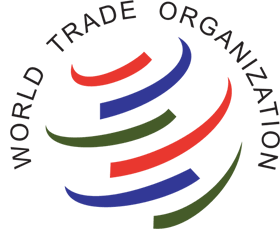

North American Free Trade Agreement
The North American Free Trade Agreement is a trade agreement between the United States, Canada, and Mexico that removes tariffs from products traded between the countries. It came into effect in 1994 and has drastically increased the amount of trade between the three countries. The agreement has come under great scrutiny because it allows American businesses to relocate factories into Mexico where costs of labor are lower.
European Union
The European Union is perhaps the best example of a trade Agreement. Unlike NAFTA which is strictly a trade agreement, the European Union also has political aspects to it because member states are required to support common economic goals as well as sociopolitical goals such as support for human-rights and strict environmental policies that must be upheld. Another important aspect of the European Union which stands out is the adoption of a common currency for many member states of the Euro. The European Union acts much like a government including a parliament and court system which member states work together for their common good to promote the economy and encourage growth.

Other Trade Agreements
Today most countries of the world belong to at least one trade agreement. Most trade agreements are regional, but over time they have expanded and have become larger and larger.



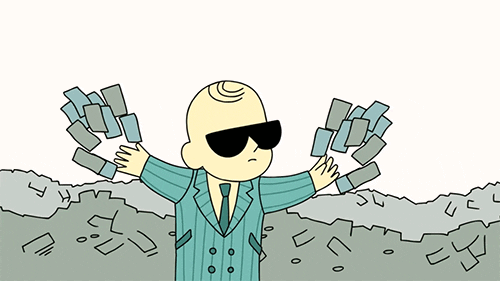


The European Debt Crisis

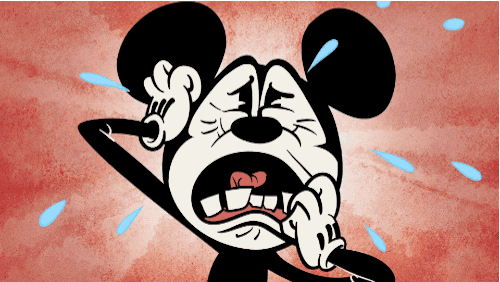



Is Free Trade Fair?
The Negative Side of NAFTA
The European Union
How the E.U. Works
A Brief History





Money
Everyone wants money... Or do they? Money is anything that serves as a medium of exchange, unit of account, and store of value. Money therefore is the middle good that allows value to be stored, transfered, and made easier. It is not the money that people want, it is what the money represents. Money therefore is just that- a representation of value which we all accept and use to pay our debts and make trade simpler, avoiding the complications of a barter system in which there is a direct exchange of goods or services for another.


What money is made of is arbitrary, but economists have identified three types of money based on where the money getse its value: Commodity Money, Representative Money, and Fiat Money.
Types of Money
Commodity Money
A commodity is an object. Commodity money consists of objects that have value in and of themselves and that are also used for money. For example, salt, cattle, and precious stones have been used in various societies as a form of money. In the past, prisons often used cigarettes as money. These items have value in themselves and can be consumed, but as commodity money they are exchanged for other items.

Representative Money
Representative money makes use of objects that have value because the holder can exchange the for something else of value. For example, if someone gives you an IOU, the piece of paper itself is worthless, however the pomise that it represents holds the value. Early currencies were representative money because the holder of the note could exchange the currency for precious metals, often gold or silver.
Fiat Money
Today most money can not be exchanged for precious metals, it is simply paper managed by the government. Fiat Money, also called "legal tender," has value because the government has decreed that it is an acceptable means to pay debts. The currency itself is virtually worthless, however society accepts the money and therefore it holds value. The Federal Reserve controls its supply and thereby manages its value.


Inflation
Have you ever noticed that the cost of things keeps going up over time? The main reason your money seems to buy you less over time is inflation. Inflation is a general increase in prices that results when money's purchasing power decreases.



What causes inflation? Nobody can explain every instance of rising price levels. Economists have created three theories about the causes of inflation.
The Quantity Theory
Demand-Pull Theory
Cost-Push Theory
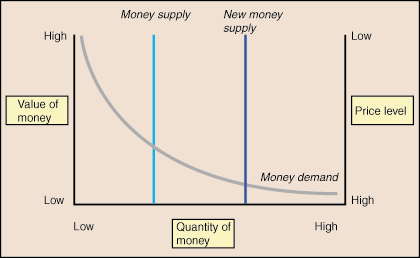

The quantity theory of inflation states that too much money in the economy causes inflation. Therefore, the money supply should be carefully monitored to keep in in line with the nation's productivity as measured by real GDP
The demand-pull theory states that inflation occurs when demand for goods and services exceeds existing supplies. The excessive demand makes those goods more valuable forcing up the prices.
According to the cost-push theory, inflation occurs when producers raise prices in order to meet increased costs. Higher prices for raw materials or labor force producers to raise their prices. In response laborers demand higher wages to pay for the more expensive goods and services. When these forces are combined the create a wage-price spiral as prices and wages increase incrementally each causing the other to rise.


